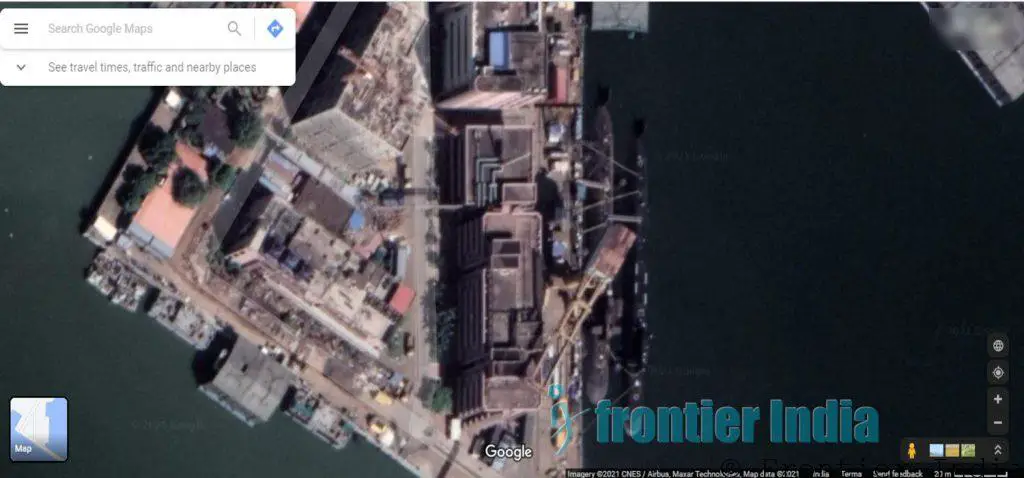Visakhapatnam hosted a ceremony on August 29, 2024, to induct India’s second domestically built nuclear submarine, the S 81 Arighaat, into the Indian Navy. India’s Defense Minister Rajnath Singh attended the ceremony. The state-owned Ship Building Centre (SBC) in Visakhapatnam built the submarine, which is a modified version of the first Indian nuclear submarine, the S 80 Arihant, commissioned in August 2016. The Arighaat, like the Arihant, is a nuclear ballistic missile submarine equipped with India’s indigenous K-15 or K-4 ballistic missiles. India conducts its nuclear submarine construction program under strict secrecy and has not released any official photographs of the Arighaat.
The national program for the development and construction of Indian nuclear submarines, known as the Advanced Technology Vessel (ATV) program, has a long history. The program has been in progress since 1974, with active technical assistance from the Soviet Union and later Russia since the early 1980s. India’s Defence Research and Development Organisation (DRDO) led the submarine design under this program, with contributions from the Indian Navy and the Department of Atomic Energy (DAE) at the Bhabha Atomic Research Centre (BARC) in Mumbai. Major contractors involved include Indian private industrial groups Larsen & Toubro (L&T, supplying hull steel), Walchandnagar Industries (supplying the reactor and main turbo-gear assembly), and Tata Power (responsible for the powerplant and submarine control systems). The specially established Ship Building Centre (SBC) shipyard in Visakhapatnam builds the submarines under this program. The DAE in Kalpakkam built a land-based prototype of the S1 83-megawatt nuclear reactor, CLWR-B1, using highly enriched (40%) uranium fuel, and it went into operation in September 2006.
Construction on the lead Indian nuclear submarine, Arihant (designated S2), began at SBC in 1998, and it launched on July 26, 2009. On August 10, 2013, the submarine physically started its nuclear reactor, and on December 15, 2014, it began sea trials. In August 2016, the Arihant was quietly handed over to the Indian Navy, though it remained in an experimental phase. In early 2017, the Arihant experienced an accident. The submarine conducted its first combat patrol (patrol mission) in September-November 2018.
At SBC, work on the second submarine, Arighaat (designated S3), started in 2009 and officially began in July 2011. On November 19, 2017, SBC secretly launched the Arighaat. The submarine began sea trials in January 2018, but it has only now been commissioned after numerous modifications.

Official Indian sources estimate the total cost of developing and constructing four nuclear submarines under the ATV program to be 900 billion rupees (approximately $14 billion at current exchange rates), a figure that appears significantly understated. Indian sources estimate that India sources 60% of the submarines’ components internally, implying that Russia supplies the remaining 40%.
Reports indicate that two additional nuclear submarines, Aridhaman (S4) and a submarine code named S4, are currently under construction at SBC. Some sources report the launch of the Aridhaman on November 23, 2021, but they expect its sea trials to commence only in 2025. Indian publications suggest that the S4 submarine is part of a modified project approved in 2012, with a displacement approximately 1,000 tons greater and a length 10 meters longer than the Arihant, Arighaat, and Aridhaman, which have a surface displacement of 6,000 tons and a length of 111.6 meters. All three known submarines of this type are named after various Sanskrit words meaning destruction or crushing enemies.
The submarines being built under the ATV program are nuclear ballistic missile submarines. The Arihant, Arighaat, and Aridhaman possess four missile tubes designed for underwater-launched ballistic missiles. These tubes can accommodate 12 Indian-developed K-15 Sagarika ballistic missiles, each with a range of 700–750 km, and nuclear warheads, or four new K-4 ballistic missiles, each with a range of 3,000–3,500 km. The S5 submarine will have an additional 10-meter missile section, as well as four more missile tubes. On November 25, 2015, the Arihant conducted its first practical launch of the K-15 missile, followed by the first launch of the K-4 missile from the same submarine on March 31, 2016. On October 14, 2022, the Arihant carried out its first combat training launch of the K-15 missile during military exercises.
India announced that it had successfully launched a nuclear-capable K-15 “Sagarika” ballistic missile from a submerged platform in February 2008. This success then brought it into the very exclusive club of countries mastering this know-how. Such a capability requires overcoming at least two difficulties. First, it is a matter of rebalancing the submersible once it has launched the multi-ton device to compensate for the resulting mass loss. Once the missile leaves its silo, it must ignite.
In 2006, the Indian government approved the development of a next-generation Indian nuclear ballistic missile submarine under the designation S5. Full-scale work on this program reportedly began in 2015, with plans to start construction of the lead vessel at SBC in 2021 and to build at least three units in the series. It is unclear if this has begun. To facilitate their construction, plans call for a major reconstruction of the SBC. Some reports indicate that the S5 submarines will feature a surface displacement of approximately 13,500 tons, a 150-190 MW nuclear reactor plant under development at BARC, and 12 long-range ballistic missiles.
To equip these submarines, the DRDO is developing the K-5 submarine-launched ballistic missile with a range of 5,000–6,000 km. In February 2017, the DRDO sanctioned the development of a three-stage K-6 intercontinental ballistic submarine-launched missile with a range of at least 8,000 km, designed to equip multiple independently targetable reentry vehicles (MIRV).
Simultaneously, in February 2015, the Indian government approved a program to create and build six advanced nuclear attack submarines, with an estimated cost of 600 billion rupees (about $9.5 billion). The surface displacement is estimated to be 6,000 tons. A special design bureau was created in Gurgaon for designing new types of nuclear submarines. However, according to recent reports, the Indian government has reduced this program to building only two submarines, and construction has not yet begun.
